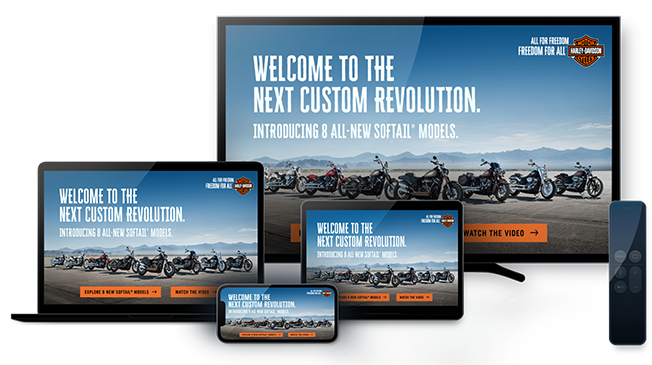4 Key Insights On Pro Sports Marketing, from AMA Atlanta

There are few audiences more captivated and engaged than live sports fans – they’re excited to be there, they’re less likely to be distracted by work or other priorities, and that’s a huge opportunity for brands to get in front of them. But brands also have to understand the strategies and philosophies of the marketers for the teams and arenas whose fans they want to get in front of.
At Infillion, our InStadium product helps connect brands to flighted advertising opportunities in 97% of the pro and college sports stadiums in the U.S., and we understand how important it is to grasp the priorities and nuances of sports team marketers. That’s why we were excited to sponsor the AMA’s Atlanta chapter’s event “Marketing Is A Team Sport,” a sold-out panel that featured leadership from all of the city’s major sports teams – Melissa M. Proctor of the NBA’s Atlanta Hawks; Adam Zimmerman of MLB’s Atlanta Braves; Ryan Mucatel of MLS’ Atlanta United FC and the NFL’s Atlanta Falcons; and Morgan Shaw Parker of the WNBA’s Atlanta Dream.
Here are four key insights from the panel event.
Marketers for professional sports teams need to accept a lack of control.
As moderator Joe Koufman, founder and CEO of Setup, pointed out: “sports marketers have absolutely zero control over their product.” They don’t have any say over whether the team wins or loses, or who gets drafted each year – the closest they have to an influence over the team’s performance is that higher revenues can mean the ability to draft better players.
How do they best grapple with this? The panelists agreed that it’s all about getting to know the ethos of a city. Get to know who the fans are, and what they want. Listen, learn, talk, and engage – and remember that sports loyalty is deeply emotional. People plan their weddings so as not to miss major football games, for example.
In other words, it’s not just the players who are in charge; it’s also the fans. And this, too, isn’t entirely rational and measurable. Several panelists pointed out that when it comes to content marketing, the “community” content – publicizing outreach to different cultural groups in a city, or local community service on behalf of a team – is often the lowest performing social media content that the team’s channels publish. But it’s that content that means the most to the niche groups they connect with.
Commercial real estate and retail are now key parts of sports marketing strategies.
While sports team marketing leaders have to contend with the fact that they can’t control how well their teams perform, they often have some additional assets that other CMOs don’t. While typical revenue sources for teams have been ticket sales, merchandise, media rights, and sponsorships, commercial real estate is now emerging as a new revenue stream and marketing platform. Stadium space is now regularly booked for conferences and other private events, in addition to concerts and music festivals, when teams aren’t playing.
And gone are the days of stadiums surrounded by parking lots on the outskirts of city limits. In Atlanta, the in-development Centennial Yards project is anchored by several sports arenas and will feature apartments, hotel rooms, and retailers. This isn’t just a revenue source – it’s also a key platform for fan engagement, providing an opportunity for teams to be a bigger part of local life and recreation even when they aren’t watching a game.
Pro sports marketing was always seen as old-school – but data is changing everything.
Just as how TV sports were seen as slow to make the jump from linear TV to streaming, marketing live sports was historically seen as more analog than other sectors of the industry. That’s changing fast. Teams now have “chief technology innovation officers.” AI chatbots are used to drive ticket sales. Brand opportunities in sports arenas are now more flexible and dynamic than traditional full-season sponsorships and naming rights – Infillion’s InStadium, for example, brings branded 3D video and augmented reality experiences to pro and college sports venues.
Then there’s the sheer amount of data that marketers now have. Data allows sports team marketers to know more about their audiences, and also to get closer to the “holy grail of marketing” – reaching consumers with something they didn’t know they wanted. Meanwhile, fans are accustomed to personalized, customized experiences and that extends to what they expect from their favorite sports teams.
The sports landscape is also changing like never before.
Just days before the panel, the ownership of the Atlanta Falcons and Atlanta United announced that it had acquired a team in TGL, the new arena-based golf league that aims to bring the sport to a new generation of fans. TGL is moving incredibly fast; there is not yet a media distribution strategy, several teams in the league have yet to be announced, and yet the first season kicks off in just a few months.
Women’s sports, too – like the WNBA – are growing fast. The WNBA announced a new capital raise last year, and at the midpoint of the 2023 season, viewership was up 67%. What we think of as pro sports is changing, and similarly, the idea of what constitutes a “sports fan” is changing, too. Marketers are learning how to reach more diverse audiences, to tell authentic stories of their players and fans on owned media channels, and to consider themselves stewards of a community, not just a team.
The key trait marketers need in this fast-moving environment? Curiosity.
Infillion’s InStadium is the easiest, most flexible way for brands to get in front of highly engaged live sports audiences. Learn more about it here.
Subscribe to our blog:
Related Posts:

How Digital Out-Of-Home Is Turning Up The Volume At Music Festivals
If you have attended a music festival sometime in the past 20 years, you’ve probably wasted at least 5 minutes holding your phone above your head, trying to get even the slightest bit of signal with little success. The sheer number of electronic devices in the area...

Smarter Targeting, Greater Value: Advancing Efficiency with Segment Optimization
In an era in which every impression is scrutinized and every dollar demands accountability, precision isn’t optional – it’s essential. That’s why at Infillion we are continually evolving the MediaMath platform to support what matters most to advertisers: Maximizing...

From Automation to Autonomy: How Agentic AI Is Rewriting the Rules of Adtech
What if your media platform could not only follow instructions, but actually understand intent, reason through nuance, and take autonomous action – all without sacrificing brand safety or human oversight? That’s not science fiction, it’s agentic AI – and it’s here to...
Let's Connect
We can help you create the personalized ad experiences viewers expect.

